The Space In Between
On languages, the places we call home, and how we find our grounding point.
Creative Fuel is a newsletter about the intersection of creativity and everyday life. If it’s your first time here: welcome! To help to make this work sustainable, please consider becoming a paid subscriber. I am so very thankful to those of you who help to keep my art alive and thriving.
Two memories.
Memory #1: I’m about 10, walking by myself at Kastrup, Copenhagen’s airport. I have an “unattended minor” badge hanging around my neck. There’s supposed to be a flight attendant to take me to my connecting flight to my grandparents in Sweden. Somehow, that person hasn’t shown up, so I’m doing it myself. My 10-year-old sense of presumptuous independence kicks in—I’ve done this before with my mother, so why can’t I try it on my own. [With hindsight, this is highly laughable, but I managed.] I hear Danish all around me. It sounds familiar, like I almost know what they’re saying, but not quite. It feels comfortable nonetheless, like being wrapped in a blanket. I feel like I know what I am doing. Feel comfortable in where I am and where I am going.
Memory #2: I’m back at home in the U.S. after my trip. I’ve been at school and I return in the afternoon crying. I feel heavy. I don’t really have the words to describe the emotion I’m feeling, but I know that something feels off. The kids at school could care less about my summer trip to Sweden, and I all of a sudden feel very outside. I feel like I don’t know what I am doing. I try to vocalize what I am feeling to my mother. She nods knowingly, offering up the words to help me understand this feeling of being pulled between two realities, roaming somewhere in the undefined space in between.
***
I flew to Sweden a couple of weeks ago and this pairing of two concrete memories rose to the surface, much like it always does when I make my way here. These are feelings that have stuck with me since childhood. They are well-known, lifelong companions.
Coming to Sweden means jumping back into a language that feels like home. Of course, I struggle and stumble sometimes to find words that I haven’t used in a while. A conversation about recent U.S. Supreme Court decisions reminds me that maybe I should read and listen to Swedish news more regularly, simply so that I can keep a more technical vocabulary for such discussions afloat. My English will most likely always be a few levels beyond my Swedish capacity, but the words and expressions and tones feel deeply embedded in me, a part of my verbal scaffolding and identity.
I read newspapers and a couple of books, and to ward off jet lag, listen to various episodes of Sommar i P1, a longstanding Swedish radio program.
I ease into a different version of myself.
I start jotting down notes in Swedish instead of English. I start finding that playing Wordle takes longer, as if my brain is stuck in between two neural networks. When I go to say something in English, I sometimes find that the word isn’t immediately there. For some reason, I get a kick out of this. I wouldn’t want to lose my language or my capacity to find words, but in the temporary moment, it reminds me that I should assume nothing about how my mind works.
Language is emotional and often deeply rooted—it can be a tether to a place, a person, a sense of being.
I don’t necessarily have the more everyday tethers to Sweden. I’ve never lived there as an adult. Never had to pay taxes, or figure out how to rent an apartment, don’t have a Swedish bank account, or any other of those technical details that make up and define a day-to-day existence, but aren’t necessarily the things that define who you are and how you feel. I don’t have the same cultural cornerstones, don’t know the names of current politicians, or music, or popular writers. On the one hand I feel exactly where I should be, but I also feel a bit outside, removed.
Mittemellan. In between.
I can often feel this way back on the other side of the world in the U.S., but in a different way. Day-to-day technicalities are obvious—I have the bank account and the tax statements—but the culture doesn’t always fit comfortably. I feel like there is something missing, something pulling me elsewhere. Here too I feel outside.
Mittemellan. In between.
Being in Sweden puts all of my usual frustrations about the U.S. on overdrive, because I know that a lot of the cultural differences stem from very different societal underpinnings. Attempt to explain how the American health insurance system works, and you’ll quickly be reminded of the absolute absurdity of a system without universal healthcare.
Or try to describe how downright dismal vacation policies leave people feeling burned out, and has created a work-obsessed culture in which people feel like they have to apologize or make excuses for taking time off.
***
I spend my week and a half in Sweden trying to take in as much as I can—the forest walks, the swims, the late sunsets, the filmjölk and wild blueberries for breakfast, the fika, the conversations. I watch the evening news, something I never do at home.
It’s as if I’m trying to take in a dose big enough to last me through the rest of the year. I know perfectly well that it never does.
My mother has always said that we should have an island somewhere in the Atlantic. A physical manifestation of a place in between our two worlds and realities. A place where you have all the good things you love from both places. A place where you don’t feel torn. A place where you’re not missing a portion of your identity. A place where you’re not yearning for the place you’re not currently in. A place where you feel whole.
Of course that island doesn’t exist, but the idea is perhaps where my own island obsession stems from. I’m a resident of the in between space and from a few decades in this place, I know one thing: if you don’t feel entirely rooted in one singular place, you have to find the roots within yourself. You become your own island.
In Swedish, ö means “island.” A singular letter, unattached to anything else—an island in its own right. Add the letter to the end of a word, and you could technically make anything an island.
Annaö. My own physical space to stand in the waters of the in between.
The space where everything is in alignment. The space where I know the color palette. The space where the language is soft and gentle. The place where land meets sea. The place where I don’t feel pulled between two worlds.
If you have another language, or another place that you call home, you may know this in between feeling. This tension between language, culture, and home is strong, but I don’t think it’s a feeling solely reserved for people who bridge two countries. If you’ve moved a few times you might feel it. If you have a close friends far away you might feel it. If you feel like the demands of life pull you away from what you really want, you might feel it. If you feel a little lost in where you’re going you might feel it. We’re all in between something.
In that in between space, we all need an island—the place to feel at home within ourselves.
For an artist, creative practice is the island. It’s the landing place. It’s the buoy.
Not just when you make something, but when you see something, feel something, hear something that aligns. That moment when you feel, “yes, this is me.”
I feel it when I stand anywhere land meets sea. I feel it in cold water. I feel it on a cloudy day when there’s the promise of rain and there’s a cup of coffee in my hand. I feel it when I see certain colors together. I feel it when I hear certain Swedish words. I feel it with certain friends. I feel it in a certain shade of blue. I feel it in certain songs. I feel it when I see certain fonts, certain lines. I feel it in certain conversations.
I feel it when there’s the electricity of a new idea, a new connection.
I feel it when I see art that makes me feel a certain way, like in the past week an installation of paper butterflies called “Black Cloud” by Carlos Amorales, and discovering the work of Norwegian artist Anna-Eva Bergman.
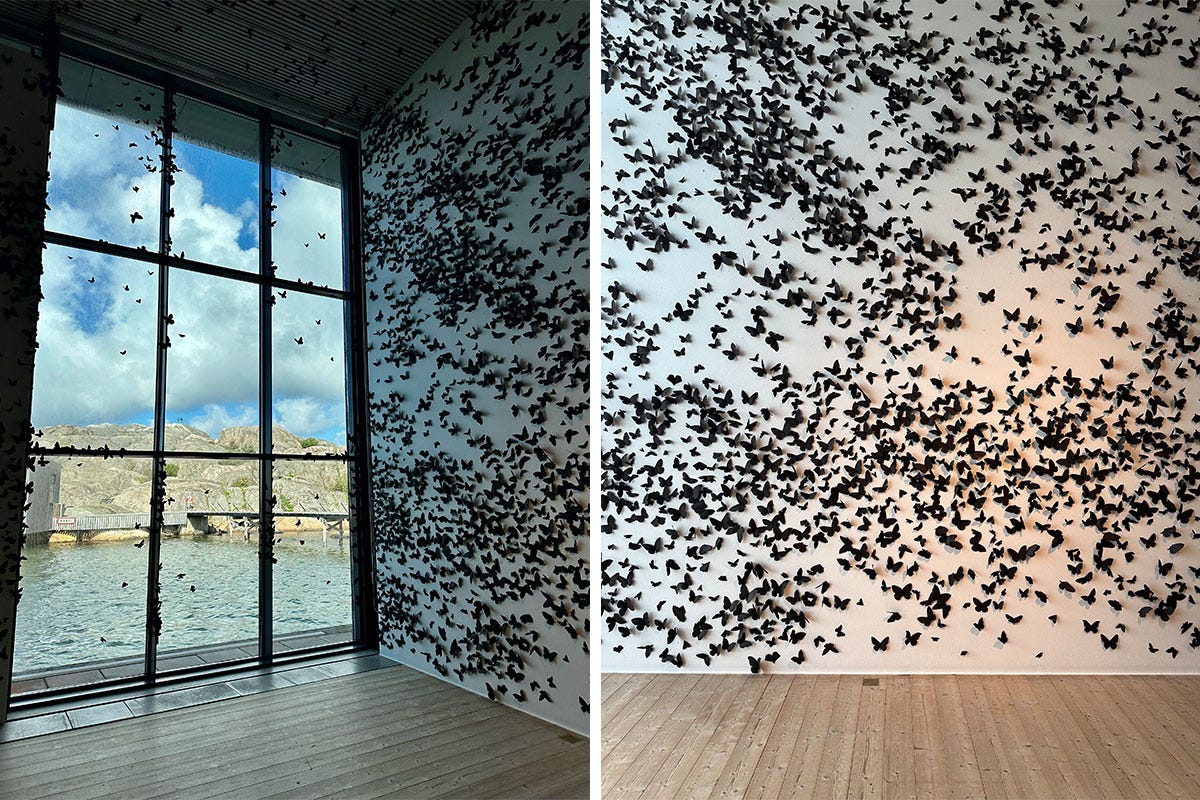
The in between space can be so uncomfortable because it asks us one of the hardest questions: who are you?
Not the usual “what do you do?” that we’re so used to, but instead, a question that’s about existence, not production.
I’m always reminded of this when someone describes feeling creatively blocked. The frustration isn’t solely because we don’t have an idea or we don’t know what the path is forward. When we feel creatively blocked, we ourselves feel blocked.
Blocked, stuck, static. When we are out of alignment, we have to find our way back to our islands. To find our way back to ourselves.
Last year, I made a papercut called “We Are All Islands.” It was something my friend Paula had mentioned in the early days of the pandemic. I started thinking about that phrase this week and drew this:
The in between space is not always easy. It can feel like you are missing something, needing something, grabbing for something that’s out of reach. Being an artist is learning how to exist in that space.
The in between space is a the place where nothing is given, nothing is certain. Nothing is mapped, there is no predetermined path. There is only a constant state of flux, a constant state of questioning.
This in between space is sometimes tenuous but often fruitful. It is ripe for discovery.
This is the place where creativity thrives. When you can navigate forward until you feel, “this is who I am.”
Here’s to the languages and places that shape us. The patterns, and the words, and the colors, and the rhythms that make us feel like we are home, like we are ourselves.
-Anna
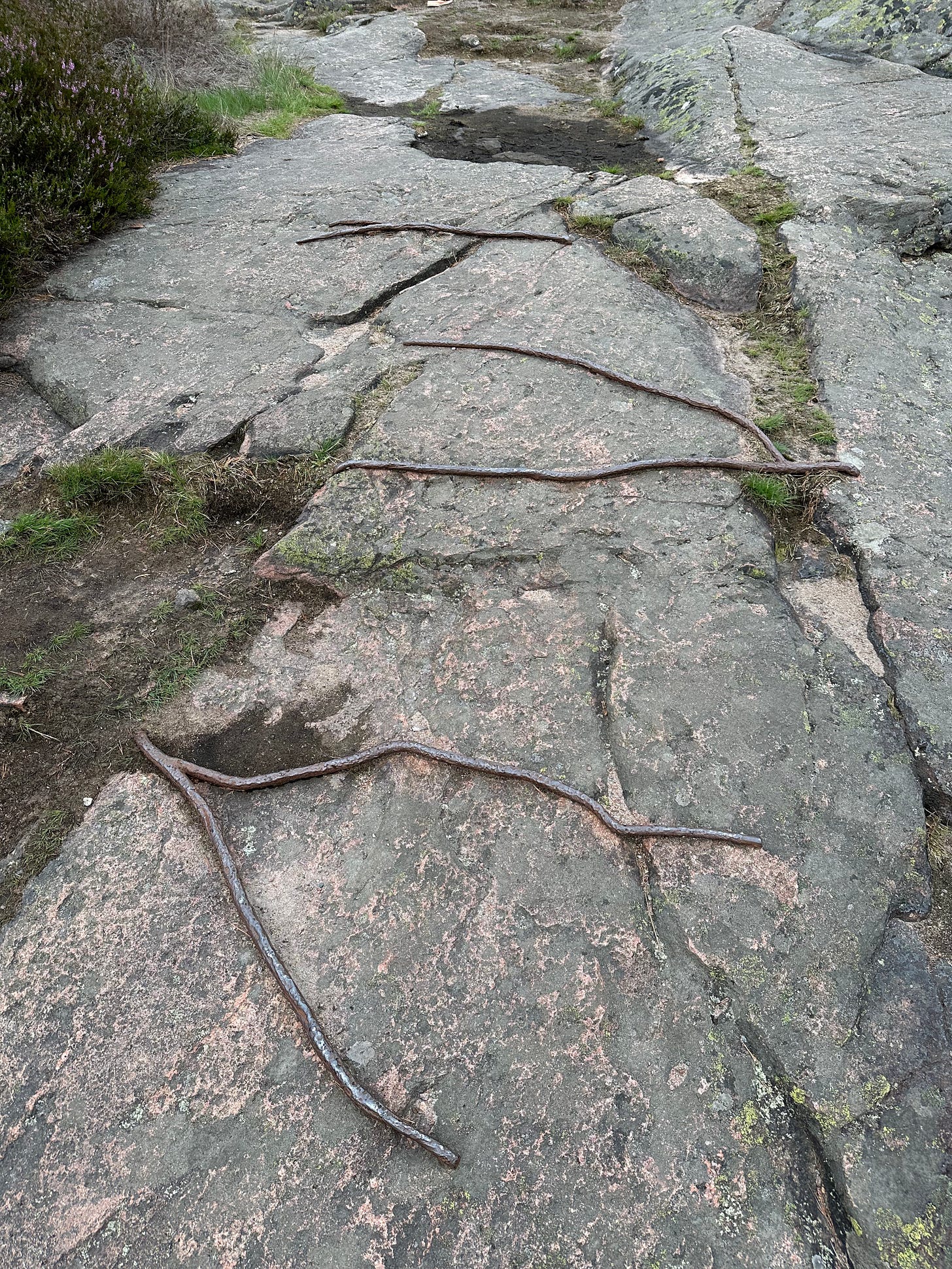
THE IN BETWEEN MONTH
I always feel like August is a bit of an in between month. Summer’s not quite over, but we can already feel it starting to dwindle. We want to hold on to the summer days. Squeeze out what we can. We start to look at what’s ahead, but not too quickly… we know we want to stay in the present moment too.
If you’ve been here long enough, then you know that Tove Jansson is a great source of inspiration. She has a beautiful quote about the in between space that I have shared before, but it’s always worth coming back to.
I’ll leave you with her words.
“I love borders. August is the border between summer and autumn; it is the most beautiful month I know. Twilight is the border between day and night, and the shore is the border between sea and land. The border is longing: when both have fallen in love but still haven't said anything. The border is to be on the way. It is the way that is the most important thing.”
-Tove Jansson



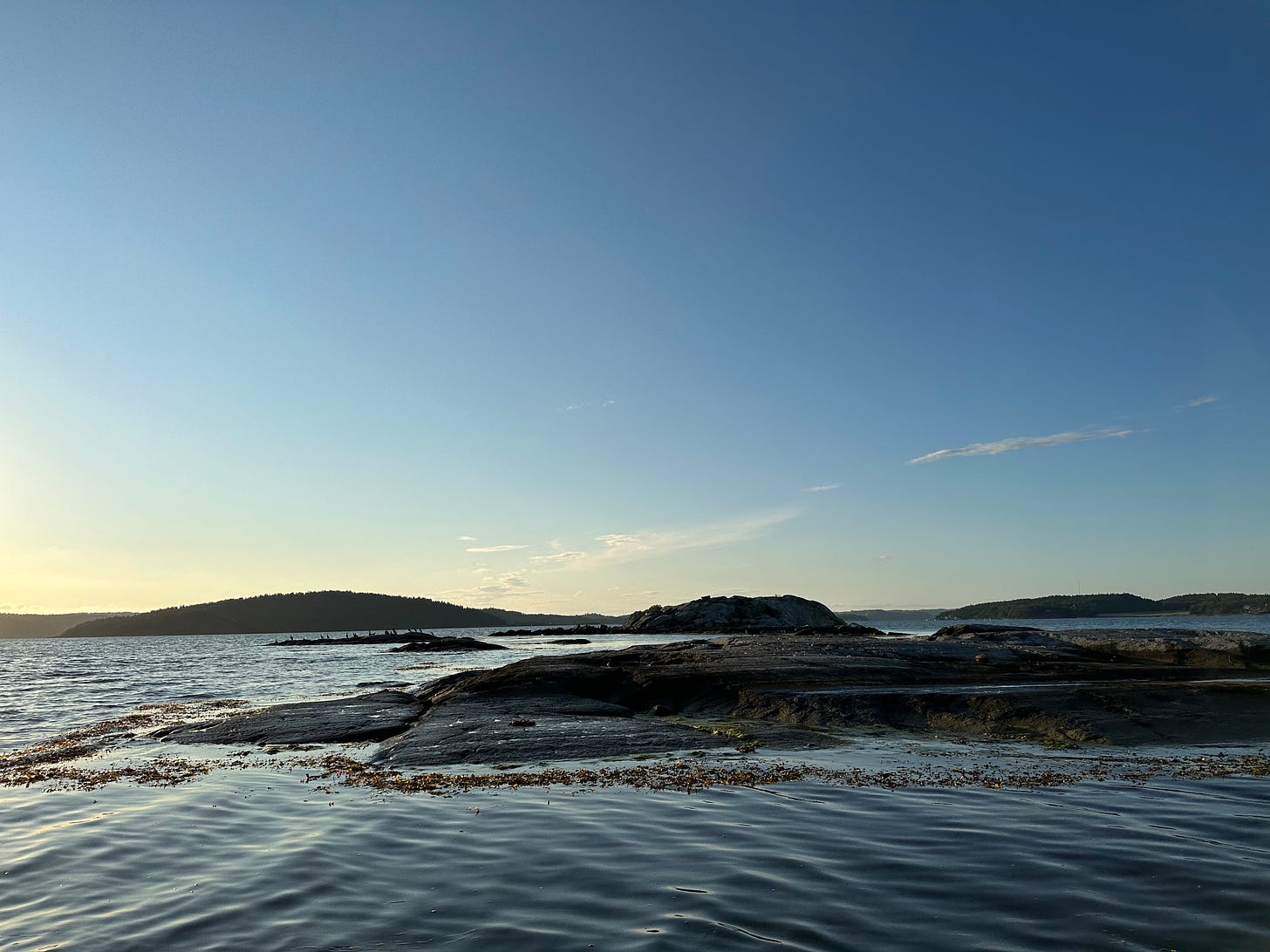
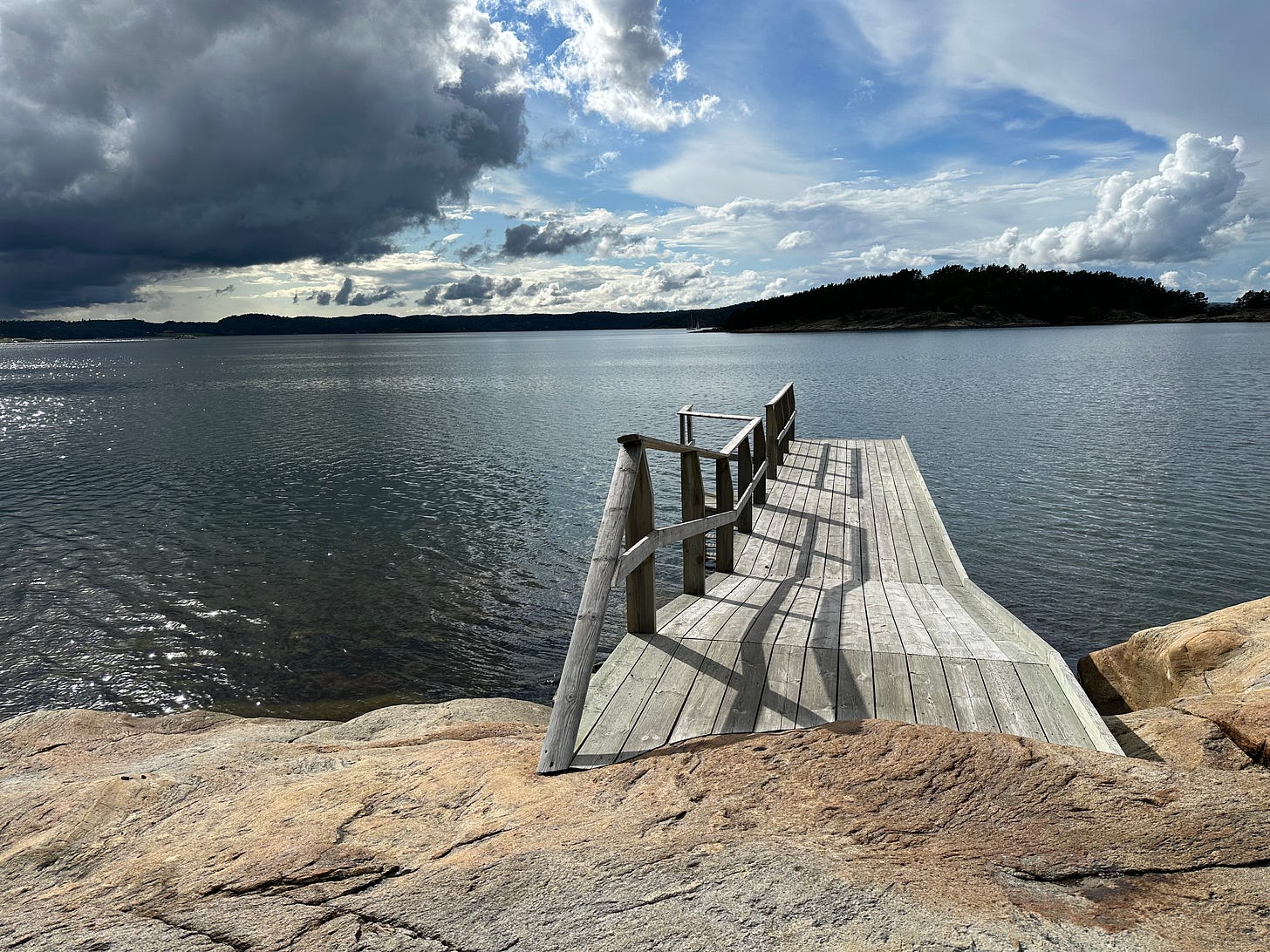
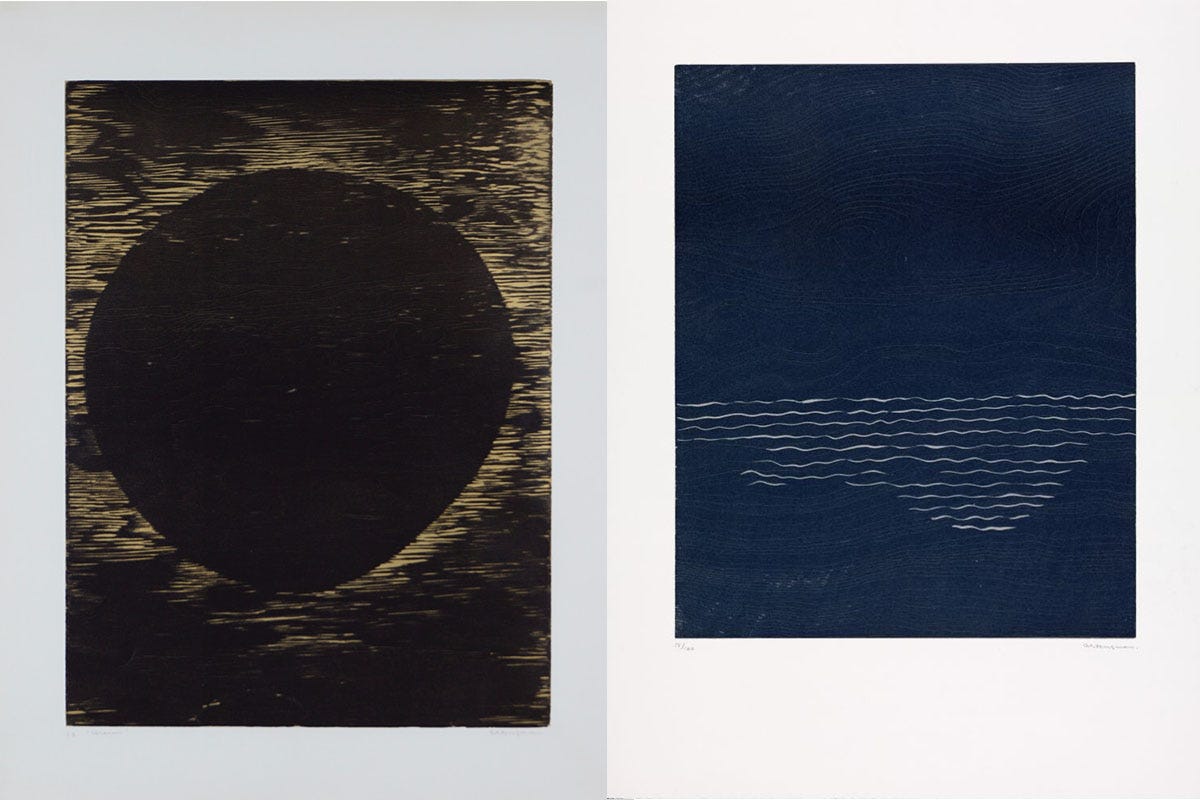
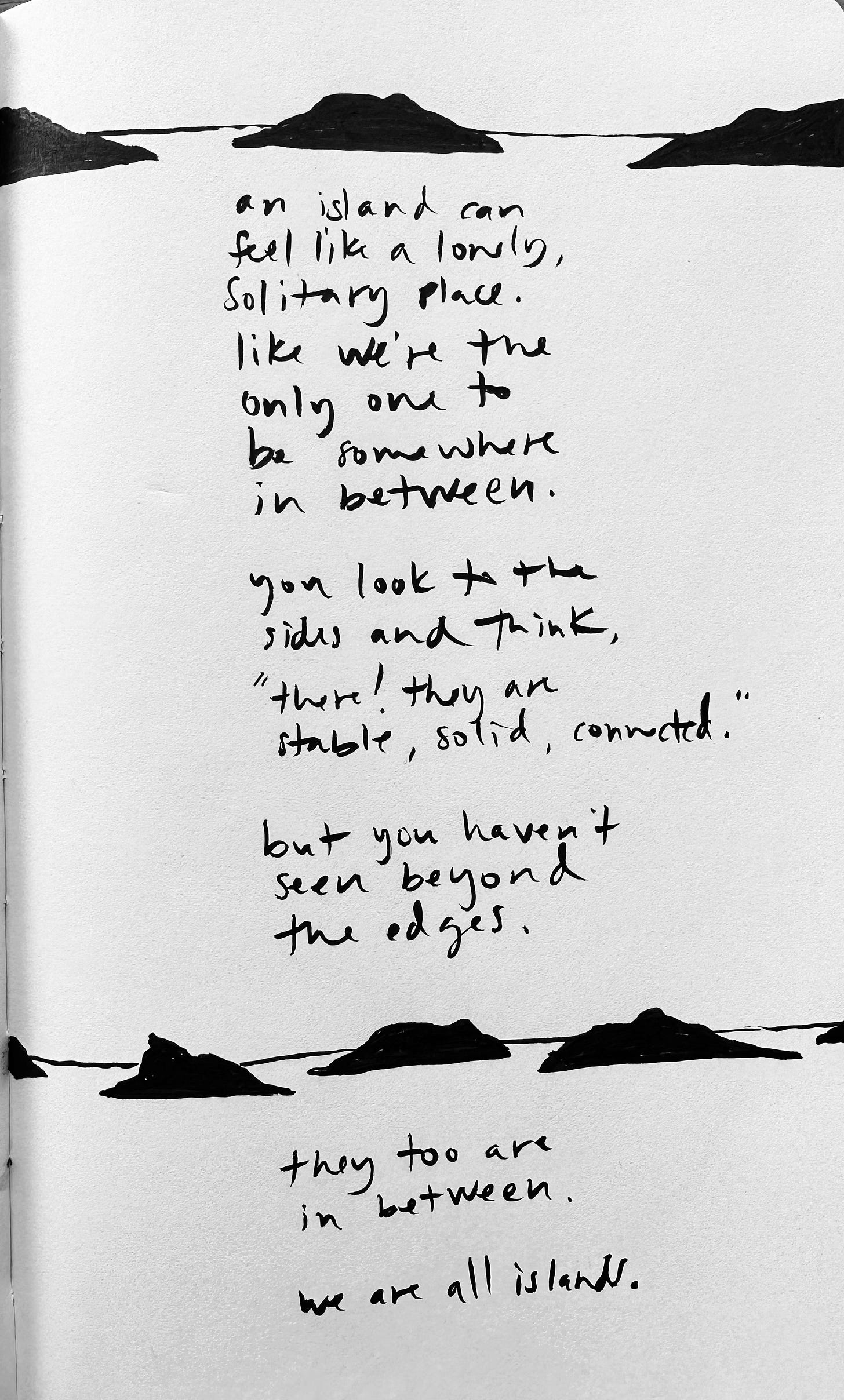
You put into words the feelings that I have being a third-culture kid ❤️
Anna, this is just beautiful. Sometimes your writing just stops me in my tracks and the rest of the world falls away for a time.